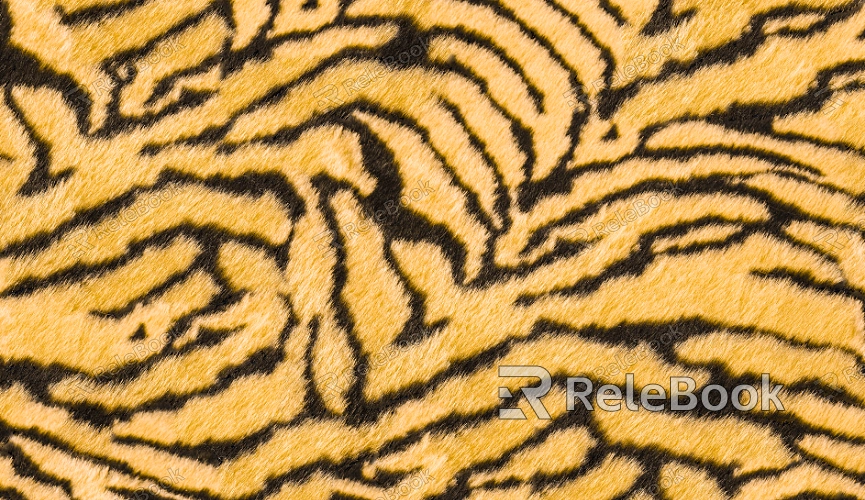How to Make a 3D Texture for Unity
In game development, virtual reality, and film production, high-quality 3D textures are essential for enhancing the realism and detail of objects within a scene. As a 3D modeling and rendering designer, I understand the importance of applying textures correctly, optimizing texture maps, and adjusting texture effects in Unity’s powerful real-time rendering engine. Unity supports a variety of texture types, including diffuse, normal, roughness, and specular maps, which help designers control lighting, surface details, and reflections in games and virtual environments. In this guide, I will walk you through the process of creating 3D textures for Unity, from texture creation to optimization, offering practical tips to help you improve both your workflow and visual output.

1. Understanding 3D Textures in Unity
First, it's important to understand what 3D textures are in Unity. A texture in Unity is an image file that enhances the surface details of 3D models. By applying different texture maps to a model's surface, designers can control an object’s appearance, including its color, glossiness, and surface relief.
Common types of textures include:
Diffuse Texture: Controls the basic color of an object.
Normal Map: Simulates surface details like bumps and grooves to enhance lighting effects.
Roughness Map: Determines how rough or smooth the surface is, affecting how light reflects off it.
Specular Map: Controls how reflective the surface is.
When applying these textures in Unity, it's essential to know how to create and optimize them so they interact seamlessly with materials, lighting, and the environment.
2. Creating UV Mapping
Before applying textures to a Unity model, you must first create a UV map. UV mapping is the process of unwrapping a 3D model’s surface into a 2D plane, which directly affects how textures are aligned and presented. There are several common methods for creating UV maps:
Automatic Unwrapping: Unity provides tools for automatic UV unwrapping, which can quickly generate a UV layout. This method works well for simple textures but may not be precise for complex models.
Manual Unwrapping: For more complex models or when precision is required, you can manually unwrap the UVs. This method ensures that each surface detail is accurately mapped onto the texture, avoiding overlapping or stretched UVs and achieving a more natural texture appearance.
When creating UV maps, ensure that the model’s topology is well-structured to avoid unfixable seams and stretching, which are critical for quality texture creation.
3. Creating Texture Images
The creation of texture images is a crucial part of the process. Typically, image editing software like Photoshop or Substance Painter is used to create these textures. Key considerations during texture creation include:
Diffuse Map: This is the most basic texture and defines the color and overall appearance of the object. Make sure the colors are consistent and avoid texture repetition or distortion.
Normal Map: Normal maps simulate smaller surface details, like bumps, scratches, or fabric weaves. These add visual complexity to the model by affecting how light interacts with the surface. You can generate normal maps by capturing the details of a high-poly model.
Roughness Map: Roughness maps make reflections appear more realistic by simulating the smoothness or roughness of a surface. It’s typically a grayscale image where darker values indicate smoother surfaces and lighter values represent rougher surfaces.
When creating textures, always use the coordinates from the UV map as a reference to ensure that texture elements align correctly with the 3D model.

4. Applying Textures in Unity
Once the texture images are created, the next step is to apply them to your 3D models in Unity. Here’s a simple process for applying textures:
Create a Material: In Unity, materials are the containers for textures. You can create a standard material and choose the rendering mode that fits your needs, such as metallic or roughness.
Assign Textures: Map the texture files to the appropriate channels in the material (for example, place the diffuse texture in the Albedo channel and the normal map in the Normal Map channel). This can be done through Unity’s Material Editor.
Adjust UV Mapping: Ensure the textures align correctly with the model’s surface. If the textures don’t fit properly, you may need to adjust the UVs in Unity’s "UV Editor" or through your modeling software to ensure a perfect match.
5. Optimizing Textures for Performance
Texture optimization is essential for improving rendering performance, especially in game development, where efficient use of resources is key. Here are some tips for optimizing textures in Unity:
Texture Compression: Use appropriate texture compression formats (such as DXT, ASTC) to reduce texture file sizes and improve rendering performance.
Lower Texture Resolution: For objects that are less visible or in the background, consider using lower-resolution textures to save memory and processing power.
Efficient Use of Maps: Apply high-resolution textures in areas where detail is essential (e.g., close-up objects) and use lower-resolution textures for distant objects or less critical areas, balancing visual fidelity with performance.
6. Rendering and Fine-Tuning Effects
Finally, to ensure the textures appear as expected, you need to fine-tune the rendering settings. Unity’s real-time rendering engine allows you to adjust various parameters, including lighting and post-processing effects, to enhance the final look of your textures. If textures don’t look quite right, you can tweak material properties or lighting intensities to achieve the desired result.
By following these steps, you’ll have a solid understanding of how to create and apply 3D textures in Unity. From UV mapping to texture creation, application, and optimization, each stage plays a vital role in achieving high-quality textures. Mastering these techniques will enable you to create immersive, visually appealing environments that perform well in Unity.
If you're looking for high-quality 3D textures or virtual environment resources, Relebook offers a rich library of assets to help you elevate your projects and achieve stunning visuals.

